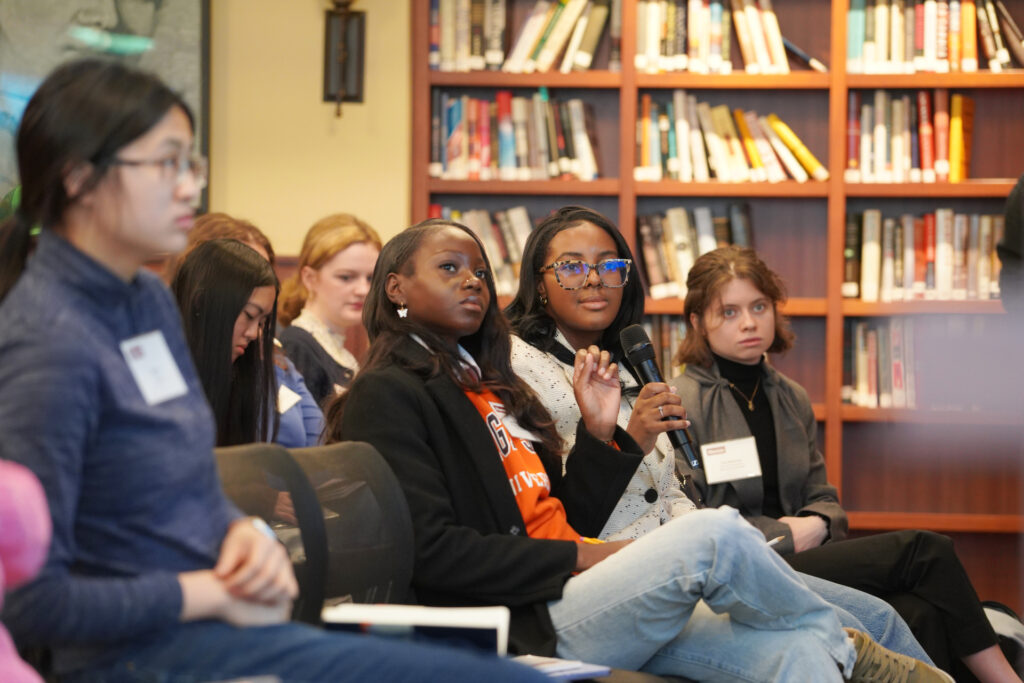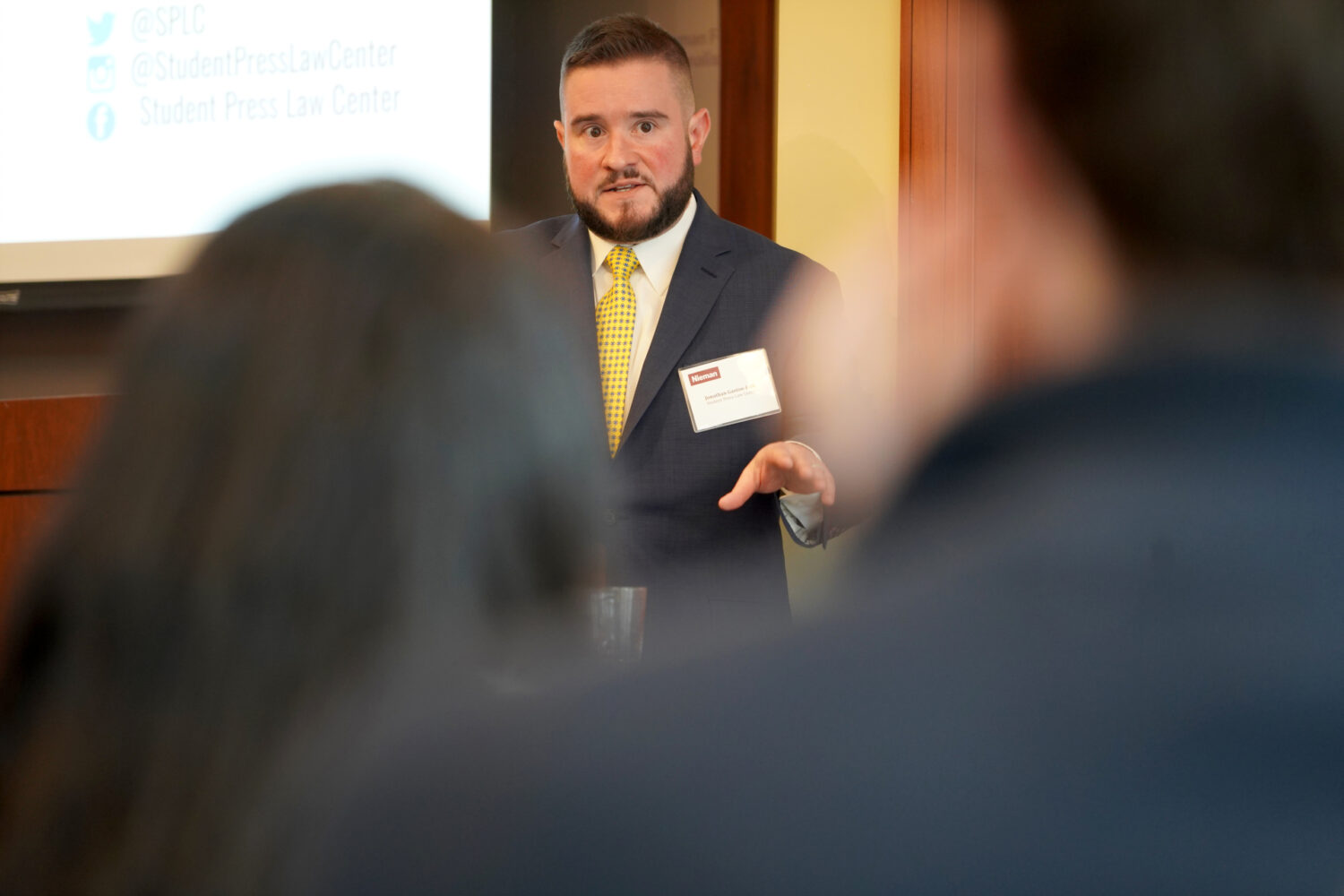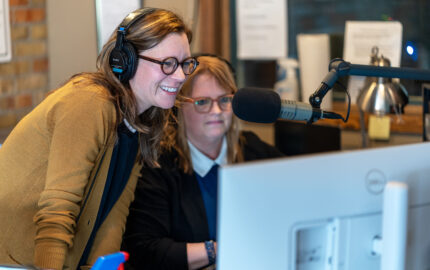A coalition of national student media advisory organizations has issued a rare alert to student journalists, revising long-standing guidance on journalistic practices in light of what it calls an “unprecedented” threat to the free exercise of student speech on campuses across the United States.
The alert recommends that student media organizations “revisit their policies on takedown requests and anonymous sources, particularly for those whose immigration status may make them targets for their lawful speech.” It also advises being transparent with sources and audiences about anonymous bylines and sourcing, and educating staff on these issues. The group of signatories — comprising the Associated Collegiate Press, Journalism Education Association, College Media Association, National Scholastic Press Association, Quill & Scroll, and the Student Press Law Center — acknowledged that the advice represents a departure from traditional journalistic norms.
“Many of our organizations have existed for a century or more, and we have never before issued this type of alert. We do not do so lightly now,” the coalition said in its alert, which was issued April 4. “In fact, what we are suggesting today stands in opposition to how many of us as journalism educators have taught and advised our students over the years. But times have changed and we feel we must respond to the moment.”
The moment is one marked by “threats to student speech posed by recent immigration enforcement actions on campuses across the country.” The alert was prompted in part by the case of Tufts University doctoral student Rumeysa Ozturk, a Turkish national who was detained March 25 by masked immigration officials near her off-campus apartment in Somerville, Massachusetts. Ozturk, who remains in detention and has had her student visa revoked, was reportedly targeted because of an opinion piece she co-wrote in the Tufts Daily student newspaper more than a year ago that criticized the university’s stance on Israel.
“Student speech that is, or should be, fully protected by the law is now being weaponized by the U.S. government, and student media must adapt to continue to fully report on their communities,” Mike Hiestand, senior legal counsel at the Student Press Law Center (SPLC), said in a statement accompanying the alert.
Complying with takedown requests — by removing or altering a story after publication — is not standard journalistic practice. Student journalism outlets, like all news media that adhere to industry standards, aim for accurate and unaltered reporting that will stand as a historic record.
But the April 4 alert says guidance for student publications needs to be updated to give more weight to the principle of “Do no harm” in light of the new ways that individuals, organizations, and government officials are targeting students, such as combing through their social media posts or doxxing — the practice of exposing private or identifying information about someone with malicious intent.
“Ethical journalism demands that we minimize harm. We have issued this alert because our organizations believe student media may fail that obligation if they continue to adhere to the traditional guidelines in light of recent developments. ICE [Immigration and Customs Enforcement] has weaponized lawful speech and digital footprints and has forced us all to reconsider long-standing journalism norms,” the alert says.
Ozturk’s op-ed piece in the Tufts Daily, as well as information about her, was highlighted by an anonymous online group called Canary Mission, which has been creating and publicizing blacklists of students, professors, and academics who it claims “promote hatred” of the U.S., Jews, or Israel.
Student journalists should have the flexibility to reconsider how best to protect sources amid these growing forms of online targeting and harassment, said Jonathan Gaston-Falk, a staff attorney at the SPLC.
“The harms are shifting in very specific ways — to do very specific harm to discrete groups of people,” Gaston-Falk said. “Given all of that, the conversations need to shift to take into account these new risks to the safety and security of the members of our staff, contributors, and community.”
The Student Press Law Center offers resources to student journalists navigating these challenges, and said it’s seen a large increase in the number of calls to its free legal hotline from students asking how to handle “requests from fearful sources and staff members to remove their names and bylines from past stories.”
Several student journalists who were attending the annual Christopher J. Georges Conference on College Journalism at the Nieman Foundation when the alert was issued said they had seen a similar uptick in requests for anonymity or from people wanting their names removed from past coverage. The alert and new guidance from the student advisory organizations was welcome, said Yezen Saadah, editor-in-chief of New York University’s Washington Square News, who called it an issue that was top of mind on many campuses.

“These are conversations being had in every single newsroom, whether we should accommodate the feelings and the safety of our sources,” Saadah said.
His paper has received requests from interviewees for anonymity, including retroactively, and considers each case individually and the potential harm of using the person’s name, Saadah said. He described the new guidance from the advisory organizations as “very validating, because it humanizes our subjects.”
Other students spoke of the difficult balance between encouraging their peers to speak freely about what is happening on their campuses, and assessing the potential harm that could result.
“It’s a very difficult position to be in, because you’re balancing your paper’s commitment to being a historical document with your ethical responsibility — as a person, as a community member, and as a journalist,” said Charlotte Hampton, editor-in-chief of The Dartmouth at Dartmouth College. “It’s especially difficult for student newspapers, I think, because young people are so often thrown into these positions with little real background experience.”
Despite regular turnover of staff who must juggle covering constantly breaking news — sometimes in the national media spotlight — with academic demands, many student newsrooms have been producing notable work.
The Tufts Daily, for example, has not only covered every development in Ozturk’s case but also issued a signed letter from the paper’s managing board reaffirming its commitment to continue publishing a variety of viewpoints. “The withholding of ideas and abstinence from debate will only contribute to the erosion of free expression. In a moment of uncertainty and turmoil, we will continue to defend independent journalism by sharing others’ viewpoints and stories,” the letter said.
The editorial board of The Huntington Daily at Boston’s Northeastern University also wrote an editorial in defense of free speech. And many other student news outlets have been standing firm under enormous pressure not only from outside forces but also from the administrations and student communities they are a part of.
“I think the amazing thing about student journalism is, for the most part, it’s been student publications holding these educational institutions accountable,” NYU’s Saadah said.
“Student journalism has always been the purest form of journalism because there are no strings attached. It’s very much a community-oriented mission,” Saadah added. “The only difference now is, all eyes are on these student publications, and there is an added pressure on them to achieve that mission.”



